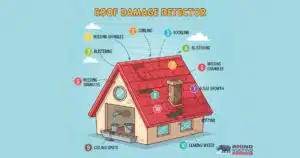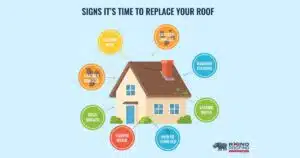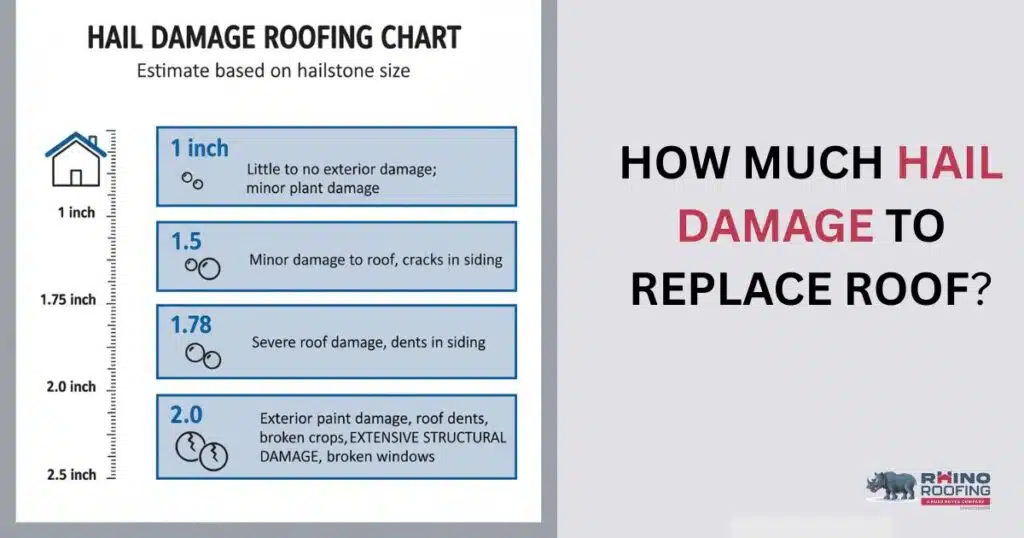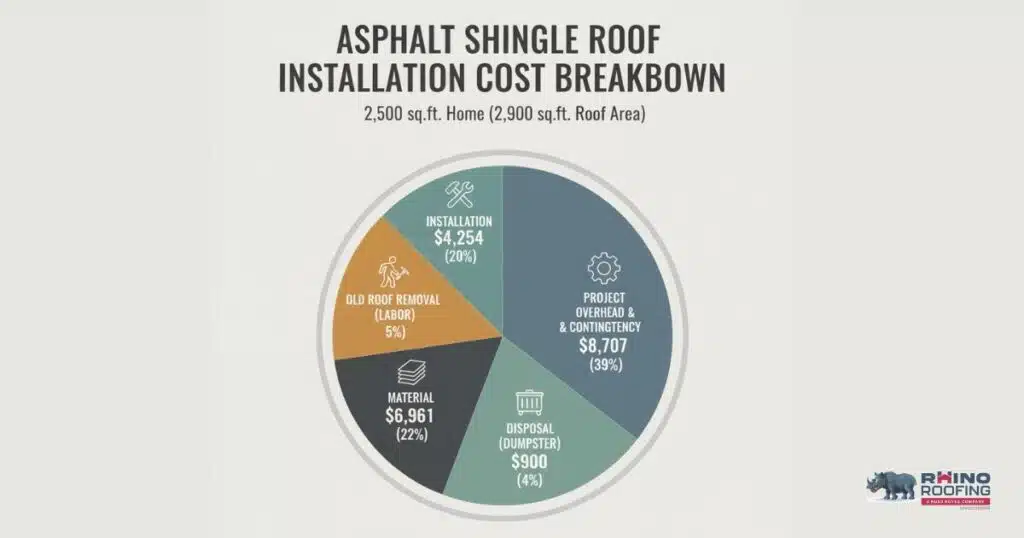Roof replacement typically occurs every 20-30 years, depending on the material used. Asphalt shingles last 20-25 years, tile roofs can last 50+ years, and flat roofs have the shortest lifespan of 15-30 years. Regular inspections and maintenance are crucial to ensure your roof’s longevity.
When it comes to home maintenance, one of the most crucial, yet often overlooked, aspects is your roof. Roof replacement is a significant investment, but knowing when it’s time to replace your roof can help prevent costly repairs and keep your home safe. In this comprehensive guide, we’ll explore the lifespan of different roofing materials, signs you need a new roof, and how often you should replace your roof.
How Long Does a Roof Last on a House?

The typical life of a roof varies depending on the type of roofing material, maintenance, and the climate in your region. On average, most roofs last between 20 to 30 years. However, this can vary significantly based on material choice and maintenance.
Breakdown of Roof Lifespans by Material:
| Roofing Material | Average Lifespan | Comments |
| Asphalt Shingles | 20-25 years | Most common roofing material for homes. |
| Metal Roofs | 40-70 years | Highly durable, withstands extreme weather. |
| Tile Roofs | 50+ years | Long-lasting but heavier. |
| Wood Shingles | 20-25 years | Prone to rot in humid climates. |
| Slate Roofs | 75-100 years | Extremely durable, low maintenance. |
| Flat Roofs (TPO, EPDM) | 15-30 years | Shorter lifespan, maintenance-dependent. |
How Often Does a Shingle Roof Need to Be Replaced?
Asphalt shingle roofs are popular due to their affordability and effectiveness. They typically last 20 to 25 years, but several factors can impact their lifespan, such as exposure to harsh weather, tree debris, and UV damage.
How to Tell If You Need a New Shingle Roof:
- Curling or Buckling Shingles: If your shingles are curling, buckling, or cracking, it’s a sign that they’ve reached the end of their lifespan.
- Granules in Gutters: Granules from shingles accumulating in your gutters indicate the shingles are deteriorating.
- Leaks or Water Stains: Water leaks inside the house, visible on ceilings or walls, often point to a roof problem that needs addressing.
Tips to Extend the Life of Your Shingle Roof:
- Regularly clear debris off the roof.
- Trim trees that overhang your roof to prevent damage.
- Inspect and maintain gutters to ensure proper water flow.
How Often Does a Flat Roof Need to Be Replaced?
Flat roofs (commonly made from TPO, EPDM, or modified bitumen) have a shorter lifespan compared to pitched roofs. Generally, flat roofs last between 15 to 30 years, depending on the material and local weather conditions.
Challenges with Flat Roofs:
- Pooling Water: Flat roofs are more prone to water pooling, which can accelerate deterioration.
- Vulnerability to Cracks: The constant exposure to the sun and temperature variations can cause cracking and damage over time.
How to Tell If Your Flat Roof Needs Replacing:
- Visible Cracks or Blisters: Cracks or blisters in the roofing material indicate weakening.
- Pooling Water: Water that doesn’t drain properly can cause leaks and damage.
- Leaks: Interior leaks or moisture buildup are signs that the roof is compromised
How Often Does a Tile Roof Need to Be Replaced?
Tile roofs, whether made from clay, concrete, or other materials, are among the longest-lasting roofing types. These roofs can last 50 years or more with proper maintenance.
Tile roofs are durable but can be vulnerable to:
- Strong Winds: Tiles may crack or break when hit by heavy wind or falling debris.
- Excessive Weight: Over time, tiles can become brittle under excessive weight or stress.
How to Tell If You Need a New Tile Roof:
- Cracked or Broken Tiles: Broken tiles are one of the most common issues that require repair or replacement.
- Sagging Roof: If your tile roof is sagging, it could be a sign of structural damage that requires urgent attention.
- Water Leaks: Any signs of leaks, especially after heavy rain, may indicate tile damage that needs replacement.
How Can You Tell If You Need a New Roof?
Sometimes, it’s not immediately clear when your roof needs replacing. Here are the most common signs that you may need a new roof:
1. Age of the Roof
As a general rule of thumb, if your roof is more than 20-25 years old, it may be time to start considering a replacement. Even without obvious issues, older roofs can become less effective over time.
2. Curling or Missing Shingles
Shingles that are curled or missing altogether are clear signs that your roof may be nearing the end of its life. While a few missing shingles can often be replaced, widespread damage indicates the need for a full replacement.
3. Leaks and Water Damage
One of the most critical signs that your roof needs replacement is the appearance of water leaks inside your home. If water is coming through the ceiling or there are visible water stains on walls or ceilings, your roof’s integrity is compromised.
4. Sagging Roof
A sagging roof is a serious issue and indicates structural problems. If the roof sags in one or more places, this could be a sign of weakening or water damage and needs to be addressed immediately.
Typical Life of a Roof: Conclusion
Knowing how often you should replace your roof depends on the type of roofing material and your location’s weather conditions. Asphalt shingle roofs last 20-25 years, while tile and slate roofs can last up to 50+ years. Flat roofs tend to have the shortest lifespan, usually around 15-30 years.
Regular maintenance is key to extending the life of your roof. It’s essential to inspect your roof regularly, clear debris, maintain proper drainage, and address small issues before they become larger problems.
If you’re wondering, “how often should you replace your roof?”, a general rule is to start thinking about replacement after 20-30 years, but pay attention to signs like missing shingles, water leaks, and sagging to help you decide sooner.
Read Here: Should I Stay Home During Roof Replacement? A Complete Guide
Need Roof Replacement or Inspection in Orlando?
If you’re in Orlando and suspect it might be time to replace your roof, Rhino Roofing Orlando is here to help. Our expert team offers reliable roof inspections and replacements. Contact us today for a free consultation!
Frequently Asked Questions (FAQs)
1. How do I know if I need a new roof?
You may need a new roof if you notice visible signs like leaks, missing shingles, sagging, or water stains inside your home. Other indicators include cracked tiles, damaged flashing, or an aged roof (over 20 years).
2. How often do flat roofs need to be replaced?
Flat roofs typically need replacement every 15-30 years, depending on the material and maintenance. Issues like pooling water, cracks, or blisters can signal it’s time for a replacement.
3. What is the lifespan of a tile roof?
Tile roofs are very durable and can last 50+ years with proper care. They are resistant to extreme weather but may become brittle over time due to heavy winds or excessive weight.
4. How long does an asphalt shingle roof last?
Asphalt shingles typically last 20-25 years, but their lifespan can be shortened by harsh weather conditions, UV exposure, and tree debris. Regular roof inspections help detect early signs of damage.
5. Can a roof be repaired instead of replaced?
Minor issues such as missing shingles, flashing damage, or small leaks can often be repaired. However, if the roof is near the end of its life or shows extensive damage, a full replacement is usually necessary.
6. How much does it cost to replace a roof?
The cost of roof replacement varies based on factors like the roof material, roof size, and labor costs in your area. On average, a new roof can cost anywhere from $5,000 to $15,000. It’s best to get a detailed estimate from a roofing contractor.
7. How can I extend the life of my roof?
To extend the life of your roof, regularly clear debris, trim overhanging branches, clean gutters, and schedule annual roof inspections to catch potential problems early.
8. What happens if I delay roof replacement?
Delaying roof replacement can lead to worsening leaks, structural damage, and higher repair costs. It’s important to replace your roof when necessary to prevent more serious issues, such as mold growth or water damage inside your home.






